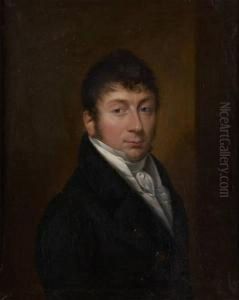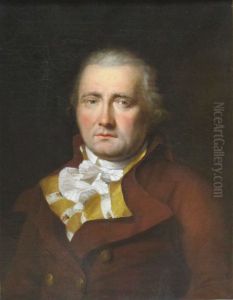Charles Pierre Verhulst Paintings
Charles Pierre Verhulst, also known as Pierre-François Verhulst, was not an artist in the traditional sense of a painter or sculptor, but rather a mathematician and demographer. Born on October 28, 1804, in Brussels, which was then part of the French Empire and is now the capital of Belgium, Verhulst is best known for his work in the field of population dynamics.
Verhulst's most significant contribution to mathematics and the biological sciences is his development of the logistic growth model in 1838. This model, initially overlooked, later gained prominence in the 20th century when it was found to accurately describe how populations grow within the confines of limited resource availability, a condition that creates a sigmoidal or 'S-shaped' growth curve. The logistic model has been applied to various fields, including biology, ecology, and economics, to describe how populations and systems grow in a regulated environment.
Despite the importance of his work, Verhulst's life was relatively short and not well-documented. He studied at the Université Libre de Bruxelles and became a professor of mathematics. His interest in the application of mathematics to social and natural phenomena led him to examine Thomas Malthus's work on population growth. Malthus had postulated that populations grow exponentially, while resources grow arithmetically, leading to a point of crisis. Verhulst refined this idea by introducing the concept of a carrying capacity—the maximum population size that an environment can sustain indefinitely.
Verhulst's logistic equation provided a more nuanced understanding of population dynamics than Malthus's more simplistic model. It was through his work that the concept of 'carrying capacity' entered scientific discourse, and his logistic model is still in use today, forming the basis of more complex models in various scientific disciplines.
Pierre-François Verhulst died on February 15, 1849, in Brussels. Although he passed away at the relatively young age of 44, his contributions to the understanding of population dynamics have left a lasting legacy in the fields of ecology and mathematics.

